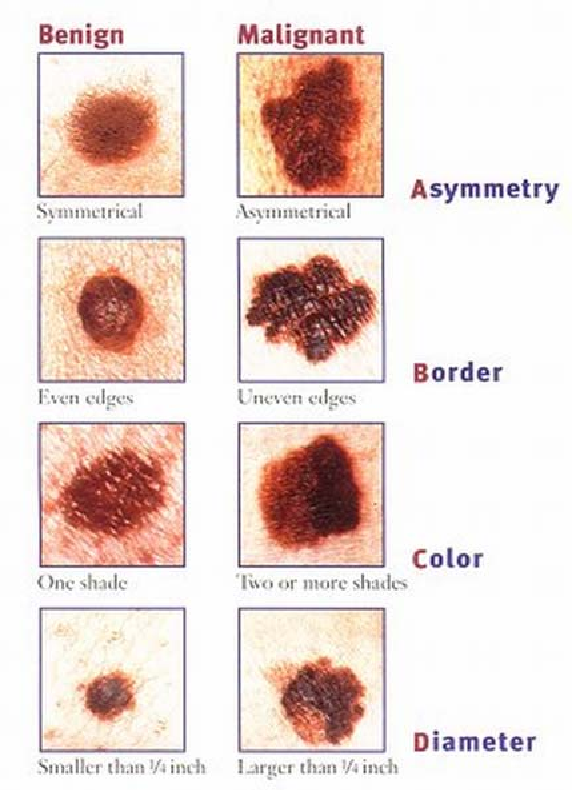Know your own skin
Do you know your own skin? Check your skin regularly, and record your findings.
Look for anything new, changing or unusual.
The ABCDE of melanoma
A is for Asymmetry. Most melanomas are asymmetrical. If you draw a line through the middle of the lesion, the two halves don’t match, so it looks different from a round to oval and symmetrical common mole.
B is for Border. Melanoma borders tend to be uneven and may have scalloped or notched edges, while common moles tend to have smoother, more even borders.
C is for Colour. Multiple colours are a warning sign. While benign moles are usually a single shade of brown, a melanoma may have different shades of brown, tan or black. As it grows, the colors red, white or blue may also appear.
D is for Diameter or Dark. While it’s ideal to detect a melanoma when it is small, it’s a warning sign if a lesion is the size of a pencil eraser (about 6 mm, or ¼ inch in diameter) or larger. Some experts say it is also important to look for any lesion, no matter what size, that is darker than others. Rare, amelanotic melanomas are colorless.
E is for Evolving. Any change in size, shape, color or elevation of a spot on your skin, or any new symptom in it, such as bleeding, itching or crusting, may be a warning sign of melanoma. Furthermore, as all skin cancers begin from a single cancerous cell, any newly-developed, pigmented lesion is a warning sign for melanoma. Bunbury Skin Cancer Clinic has detected many melanomas smaller than 6mm in diameter.

